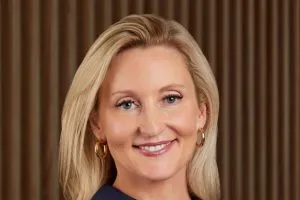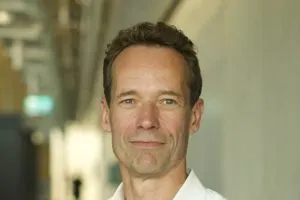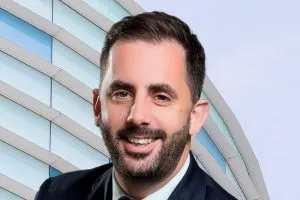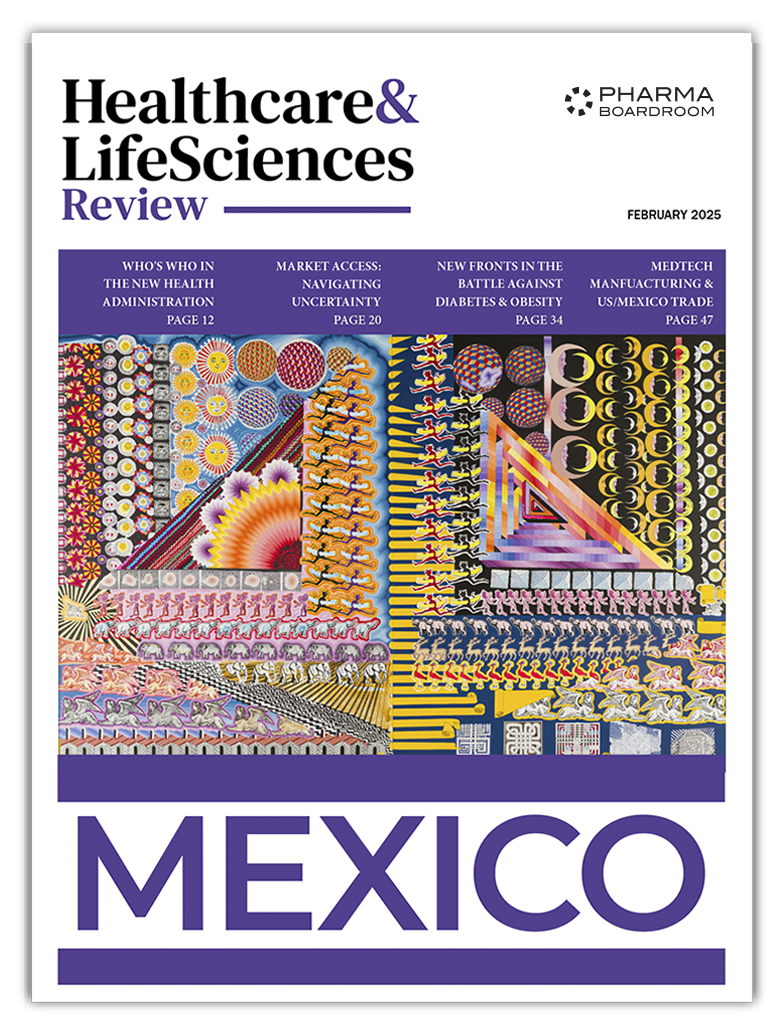Since Paul Hudson took the helm in 2019, Sanofi has been in transformation mode, shedding its consumer health assets to focus on high-growth areas like oncology, immunology, and vaccines. With bold investments in R&D and AI-driven innovation, the French pharma is positioning itself as a pure-play biopharma leader. In conversation with PharmaBoardroom, Sanofi regional executives share their top priorities.
Consolidating LatAm’s Status as a Multi-Country Organisation
 With over a century of presence in Mexico and a strong footprint across Spanish-speaking Latin America, Sanofi continues to expand its regional impact. With a base in cardiovascular and diabetes care and a focus on building immunoscience in the region, the company has made a firm commitment to clinical development and manufacturing with significant production hubs in Mexico and Argentina, as well as the recently created global hub in Bogotá.
With over a century of presence in Mexico and a strong footprint across Spanish-speaking Latin America, Sanofi continues to expand its regional impact. With a base in cardiovascular and diabetes care and a focus on building immunoscience in the region, the company has made a firm commitment to clinical development and manufacturing with significant production hubs in Mexico and Argentina, as well as the recently created global hub in Bogotá.
As part of the global Play to Win strategy, Sanofi LatAm has been reconfigured under a single structure as one of seven multi-country organizations (MCOs), a change Emily Morris, head of Latin America and GM & country pharma lead for Mexico, has been tasked with consolidating. “One of my main goals is to help shape this new approach within the LatAm region.”
Morris sees the new configuration as a positive development. “This structure enables us to contribute more effectively to the overall vision through portfolio optimisation, a focus on immunoscience, and maintaining our commitments to manufacturing and clinical trial development, especially in Mexico and the wider region.”
Morris acknowledges the unique healthcare challenges across Latin America. “Each country faces distinct challenges, particularly around timely access to healthcare.” However, she also sees that the new model, as opposed to working within isolated country operations, is bringing wins for these countries. “The LatAm MCO spans 31 countries, with 11 affiliates and 2,000+ talented employees, making it our largest MCO by revenue for Sanofi. While each country has its own unique regulatory pathways and access conditions, our shared structure allows us to leverage synergies across the region.”
Rare diseases have emerged as a key beneficiary of this new structure. “We have a strong legacy in rare disease care, which prioritises finding patients and getting them timely access to treatment—a critical success factor in rare diseases. Argentina has excelled in this area, establishing centres of excellence and patient identification mechanisms. Through the MCO model, we can collaborate with the Argentinian team to implement similar approaches across Latin America—utilizing artificial intelligence, genetic testing, and other tools. By sharing these synergies, we can reach patients more quickly and efficiently, making a meaningful impact in their healthcare journeys.”
Navigating Switzerland’s Regulatory Hurdles

Despite lacking dedicated R&D or manufacturing facilities, Sanofi has made Switzerland a strategic priority. “Switzerland has been identified as a key market for its substantial growth potential and contributions,” says Michael Kubischik, country lead and GM specialty care, Switzerland.
Kubischik recognizes Swissmedic’s recent strides in regulatory innovation. “Swissmedic has made commendable progress in recent years by implementing innovative pathways and prioritising efficient approval processes,” he affirms, highlighting initiatives such as the ACCESS Promise pilot, part of the broader Access Consortium designed to streamline review processes and foster collaboration with other regulatory bodies.
In the country lead’s view, there is, however, room for improvement. “Despite these advances, there are still challenges, primarily related to what we call the ‘Swiss finish.’ This refers to additional requirements unique to Switzerland, for example, requests for supplementary data that aren’t required by other agencies, which can delay the approval timeline.” These additional prerequisites add a layer of difficulty. “As a global company, balancing these requirements with international schedules is complex, as we aim to meet patient needs worldwide.”
Swissmedic’s approval timelines are now on par with the EMA’s, particularly for high-need treatments and international collaborations. Kubischik emphasizes the affiliate’s dedication to collaborating with Swissmedic to make Switzerland’s regulatory framework more agile. “Sanofi remains committed to working closely with Swissmedic to further streamline this process, continually aiming to provide Swiss patients with rapid and broad access to cutting-edge medicines as we sharpen our focus on innovation.”
Leveraging the Gulf Region’s Openness to Innovation
 Since 2021, Sanofi Specialty Care has introduced around 50 innovative products in the Greater Gulf. For Preeti Futnani, GM for Specialty Care in the Greater Gulf region, a key driver of this success is alignment with the region’s healthcare priorities. “In the Greater Gulf region, governments and health ministries have a strong appetite to prioritise healthcare. They are committed to ensuring that their patients have access to the best available medications, and they want these therapies brought to market quickly. This alignment of priorities between Sanofi’s mission and the region’s healthcare vision has been instrumental in our success.”
Since 2021, Sanofi Specialty Care has introduced around 50 innovative products in the Greater Gulf. For Preeti Futnani, GM for Specialty Care in the Greater Gulf region, a key driver of this success is alignment with the region’s healthcare priorities. “In the Greater Gulf region, governments and health ministries have a strong appetite to prioritise healthcare. They are committed to ensuring that their patients have access to the best available medications, and they want these therapies brought to market quickly. This alignment of priorities between Sanofi’s mission and the region’s healthcare vision has been instrumental in our success.”
Futnani stresses the region’s openness to embracing new therapies yet admits the need for a regulatory environment that can effectively support the uptake of innovation. “While the region is clearly prioritising its patients, the healthcare ministries also need to adapt and be agile in managing the influx of innovative treatments,” says the GM. “For the regulatory authorities, a focus on value-based assessments, patients and transparency in how changes and modernization are implemented is key.”
Despite the region’s patient-first approach, healthcare ministries must adapt quickly to support the influx of innovative treatments. “There is a lot of work ahead in fostering collaboration between multinational companies like ours, which are heavily invested in the region, and the governments, who are eager to bring these innovations to their populations. It is crucial to involve multiple stakeholders in these discussions, including physicians and patients, whose voices are becoming increasingly important. While patient advocacy groups are still emerging, the shift is happening, and we are starting to see more Middle Eastern representation at global medical congresses, which reflects a growing involvement from the region’s thought leaders.”
Tackling Vaccine Scepticism in the GCC

In the Gulf region, Sanofi already holds a strong position in paediatric vaccines and vaccines for meningitis and influenza. The firm has ambitious plans to continue growing the area. “We already have a strong market presence, particularly in paediatric vaccines, but our upcoming product launches are set to fuel significant expansion,” asserts Baptiste de Clarens, GM of Vaccines for the Greater Gulf.
For Clarens, growth will be driven in part by Sanofi’s high-dose flu vaccine. “One of the most exciting products is our high-dose flu vaccine, the first differentiated flu vaccine in the region. In Saudi Arabia, it has already been recognized as the best product with a preferential recommendation from health authorities. We are seeing fast adoption of these innovations, which is a great sign for future growth.” Another key product is the RSV monoclonal antibody, which is up for launch in the region this year.
While vaccine adoption is rising, skepticism persists in parts of the GCC. “The region, particularly Saudi Arabia, is quite polarized when it comes to vaccine uptake,” he says. Adult immunization rates, especially for flu and COVID-19, still have room for improvement. “While the pandemic response in the region was outstanding, the baseline annual vaccination rates for the elderly and other vulnerable populations remain lower than ideal.”
The key challenge is not just rapid vaccine adoption but also strengthening adult immunization infrastructure. “The opportunity lies in not only embracing innovation and adopting the latest vaccines quickly, but also in building a more robust immunization infrastructure for adults. This is crucial as more vaccines targeting older populations are developed, such as those for RSV and pneumococcal diseases.”



